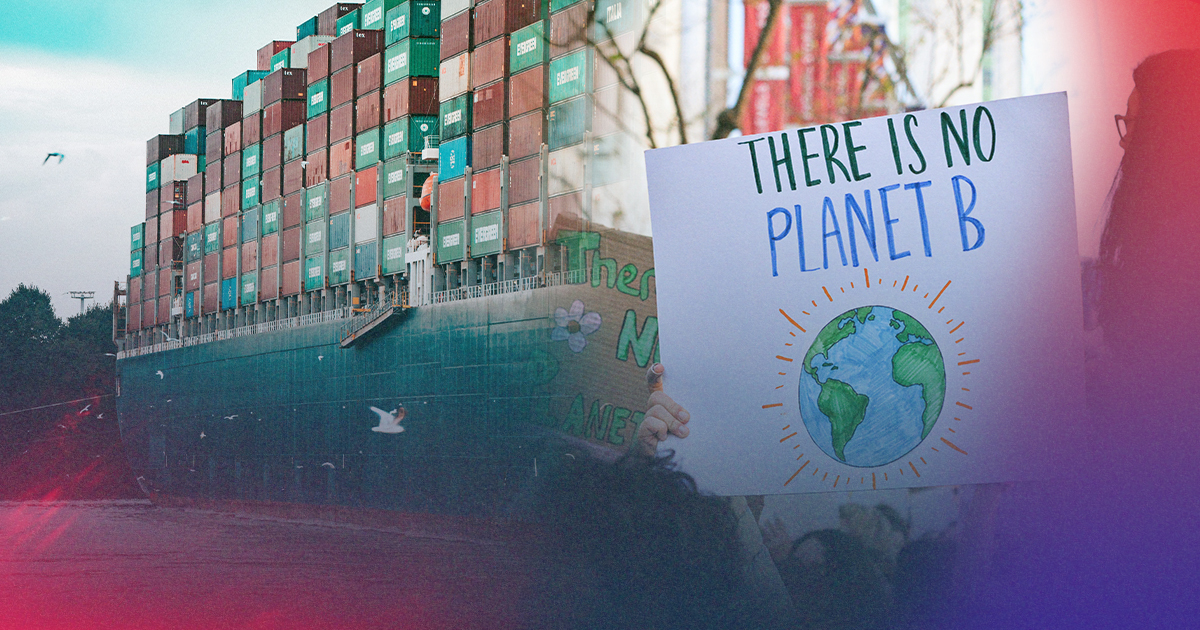
Jamie McCrary
Our global supply chain is facing another major disruption after the throes of COVID-19—and this time, the perpetrator is climate change.
The Panama Canal—a vital conduit for global maritime trade and the only interoceanic route dependent on freshwater—has been suffering a severe drought, posing significant delays and restrictions on trade. The canal’s lock system draws water from several seawater lakes, all of which hit historic lows in July.
This means vessels cannot carry the same weight or volume of products, potentially leading to higher shipping rates, longer delivery times, and even inflation. Consumers tend to bear the brunt of these consequences, paying higher prices for fewer products.
“Global trade is very dependent on environmental changes and our social practices,” says Ayman Omar, Associate Dean of Graduate Studies and professor at American University’s Kogod School of Business. “It shows just how fragile our supply chain is. Climate issues in one country can potentially disrupt the entire world’s supply chain.”
The drought is part of a larger, longer-term issue.
While this year’s drought is the worst on record in more than a century, it is not an isolated incident. Over the past 25 years, Panama has experienced an increasing number of intense weather-related disasters, fueling the urgency to find a solution.
The country experienced its three driest consecutive years from 2013-2015 and was also hit by four hurricanes during that same period. Eight of Panama’s most devastating storms have been recorded in the past quarter century.
Coupled with high temperatures and little annual rainfall, the Panama Canal is now face-to-face with significant climate-driven challenges.
Luckily, Panama received some much-needed rainfall toward the end of June, allowing canal authorities to postpone drought restrictions. Omar, who specializes in global supply chain management and sustainability, warns this is only temporary relief.
“The core concern is still the same: How do we manage the impact of climate change on global transportation and supply chains?”
Businesses need a mindset shift.
Omar says more comprehensive and climate-focused risk management is the answer.
Companies need to prioritize considering environmental factors, like droughts or this summer’s record-breaking heat waves, as part of their risk analysis for supply chain disruptions. Many still only focus on financial or social factors, ignoring potential climate-related issues entirely.
Poor risk management has also been the culprit in many recent non-climate-related disruptions, including June’s I-95 bridge collapse in Philadelphia and supply chain breakdowns during Covid-19. We’ve seen a lack of foresight in risk mitigation more generally, as well, says Omar.
A big part of the solution is developing a better understanding of what the risks are, what they mean to companies, and how this might impact society."

Ayman Omar
Associate Dean for Graduate Programs, Kogod School of Business
Omar says we also need to stop viewing climate-related disasters as singular events. Many business owners treat incidences like this summer’s canal drought as a rare occurrence when it’s part of a longer-term and more severe pattern.
This more global mindset empowers businesses with the information needed to develop more proactive and nimble response plans.
“If you don’t have a solution in place when the problem hits, you’re already far behind,” Omar says. “We have to expect a supply chain disruption to occur at any point.”
Ultimately, this way of thinking helps companies stay resilient when facing climate-related disruptions—and creates more sustainable supply chains. In the case of the Panama Canal’s ongoing drought battle, more effective risk management may be make or break for both consumers and companies.
“There are very significant and real implications knocking on our doorsteps,” says Omar. “Unless we take action, it will continue to impact trade and economies directly.”
